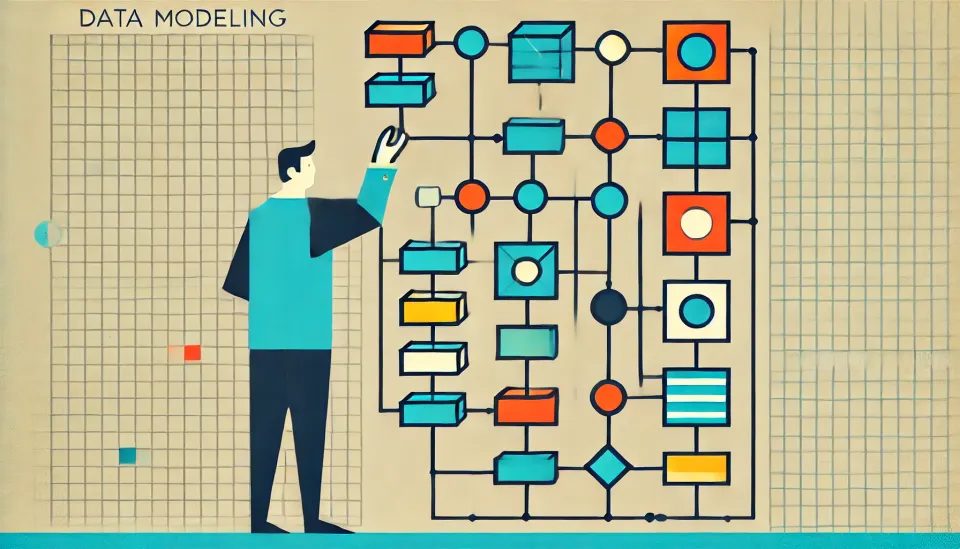What is Data Modeling?

Data modeling is an aspect of data management that involves creating a visual representation of data structures, relationships, and business rules. It provides a blueprint for designing databases, organizing data, and ensuring data integrity.
What is Data Modeling?
Data modeling is the process of defining and designing the structure and relationships of data in a system.
It involves creating conceptual, logical, and physical models that represent the data entities, attributes, and the associations between them.
Conceptual Data Model
A conceptual data model focuses on the high-level understanding of data requirements and provides a simplified view of the entities and their relationships. It helps stakeholders grasp the business concepts and lays the foundation for the subsequent modeling phases.
Logical Data Model
A logical data model delves deeper into the details by defining the entities, attributes, and relationships using a standardized notation. It serves as a bridge between the business requirements and the physical implementation of the data.
Physical Data Model
A physical data model translates the logical model into a database-specific representation, including the actual data types, indexing, and constraints. It considers the technical aspects of data storage and retrieval, optimizing performance and efficiency.
Why is Data Modeling Important?
Data modeling plays a critical role in several aspects of data management.
Here are the five key benefits of data modelling for data management:
1. Data Consistency and Integrity
Data modeling ensures that data is organized, structured, and linked in a way that preserves its consistency and integrity. By defining relationships and constraints, data modeling helps enforce business rules and prevents data anomalies.
2. Efficient Database Design
Effective data modeling leads to well-designed databases that optimize data storage, retrieval, and query performance. It enables efficient data access and manipulation, resulting in improved system performance and user experience.
3. Effective Communication
Data models serve as a visual representation of complex data structures and relationships. They provide a common language for communication among stakeholders, including business analysts, developers, and database administrators, facilitating better understanding and collaboration.
4. System Scalability
Data modeling considers future growth and scalability requirements. By analyzing data dependencies and anticipating future needs, it enables the design of scalable data structures that can accommodate increasing volumes of data without sacrificing performance.
5. Data Integration
Data modeling helps organizations integrate disparate data sources by identifying common elements and mapping relationships. It enables data harmonization and consolidation, facilitating data integration efforts across different systems and applications.
How Does Data Modeling Work?
Data modeling involves a systematic approach that includes the following steps:
Step 1: Requirement Gathering
Understanding the business requirements and data needs is the first step in data modeling. This involves working closely with stakeholders to identify entities, attributes, relationships, and business rules.
Step 2: Conceptual Modeling
Creating a conceptual data model involves visualizing the high-level entities, relationships, and attributes. This helps establish a shared understanding of the data requirements and provides a foundation for subsequent modeling steps.
Step 3: Logical Modeling
Translating the conceptual model into a logical data model involves refining the details and formalizing the relationships and attributes. This step includes using standardized notations such as Entity-Relationship Diagrams (ERDs) or Unified Modeling Language (UML).
Step 4: Physical Modeling
Converting the logical model into a physical data model involves mapping the logical entities, attributes, and relationships to the specific database technology being used. It includes defining data types, indexes, constraints, and other implementation details.
Step 5: Validation and Iteration
Throughout the data modeling process, it is essential to validate the model against the business requirements, seek feedback from stakeholders, and make necessary refinements. This iterative approach ensures that the data model accurately represents the desired data structure.
Final Thoughts
When done correctly, data modeling ensures the effective organization, integrity, and scalability of data. Want to learn more about the Pliable platform? – Request a demo here.



